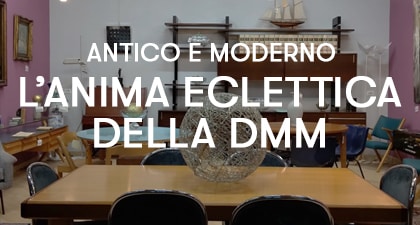
The history of art is characterized by the continuous revival of the styles of the past, now more obviously, now as a distant echo.
Often even styles that historically may seem antithetical to each other coexist side by side.
An emblematic example in this regard was Eclecticism, which established itself between 1870 and 1890. This way has in fact been characterized by the recovery and reworking of stylistic features of the past, belonging to different currents and eras. In these years it is not difficult to find mirrors that combine neoclassical ornamentation with rocaille carvings, neo-Renaissance sideboards or showcases with neo-Gothic lines.

But also the Baroque forms were widely taken up and reworked in the second half of the nineteenth century.
The Neo-Baroque typical of this chronological arc is characterized by the revival of this current, appreciated precisely for its whimsy and excess of forms. Even the extremely decorative component was admired and sought after by nineteenth-century society. The wavy shapes, the gilding that enrich entire furnishings found a wide appreciation. The search for theatricality and spectacle that had already distinguished the Baroque taste were again and fully satisfied.
Certainly the recovery of the Baroque in the Eclectic period was characterized by novelties, readapting the style to the new nineteenth-century needs. The Neo-Baroque is in fact characterized by a rediscovery of naturalism very special.
The material is processed to emulate nature, which becomes an integral part of furniture and furnishings.
Witness the protagonists of our Classic Monday, a pair of wall gueridon. In fact, the support is quite characteristic, consisting of carved wood in imitation of a rocky base from which stands a trunk adorned with vines.
These supports the marble shelf of peach trees, adorned in the band below by a lambrecchino carving, finished with tassels. The typically baroque search for scenographic scenery is expertly developed and successful: it really seems that two trunks of vine were used, subsequently gilded, to support the support surfaces.
The two small consoles are an expression of high craftsmanship, for the great quality and attention to detail, which is manifested in the meticulous carving and attention paid to create two perfectly symmetrical furniture, certainly born to be presented as a couple.
The client had to have turned to an important and renowned workshop, to succeed in surprising guests with the furnishing and preparation of their home, as well as the nineteenth-century bourgeoisie hoped to be able to do.













